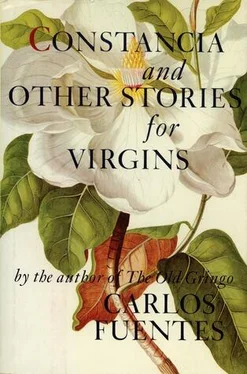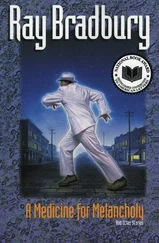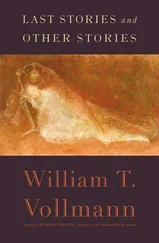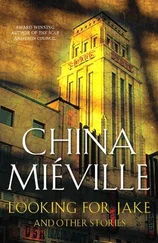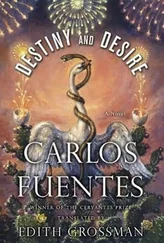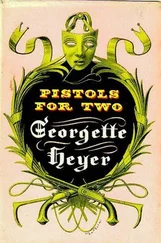The brevity of the ceremony was appropriate: the professor had no need for ceremony, he was at Wells, where he wanted to be, and the important thing was not to delay his solitary entrance, not to that marvelous English cathedral but to architecture itself, his true homeland, a place where he would never find peace, so much had he desired it, so much had he dreamed of it. Ferguson had to become architecture.
Here, with him, we felt that was how it should be, that all the places we could recall from our long friendship with him were here — the Mackintosh house in Glasgow, which was a delicate reflection of the professor’s spirit, and which we knew better from his lectures than from photographs; or the projects on José María Marroquí, which we knew all too well; or our house on Avenida Nuevo León, where our impossibly fair mother died, and our father, dark like us; or the office on Colonia Roma, where we surprised the pallid architect Ferguson screwing his daughter, who was dark like us; or Ferguson’s own house in the Pedregal, which contained not a single photo of Catarina’s mother. If Catarina did not resemble her father, did she look like her mother, dead, absent, mute, unmentionable? Nobody ever dared mention her, neither us nor them, the father and the daughter, except once, when we heard Catarina say:
— When we moved here to the Pedregal, we got rid of a thousand old things, photos, dolls, dresses, records, all that, you know …
Here, our professor’s wisdom was plain to see; here, he was equidistant from all his favored places, those of architecture and of his heart. This was the point of equilibrium — how well he understood! — on which his entire life balanced, and only in death could he occupy it.
Catarina knew this as well as we did; we could go now, leaving the casket to the work of time, and meet outside.
A pair of tall monks with light, graying hair and profiles like ecclesiastic Hamlets were walking through the cloisters in animated discussion, accentuating our melancholy mood, our feeling that every stone is a forgotten memory.
We were silent as we left the cloisters and went outside, to admire the incomparable façade of Wells Cathedral, which is the point of departure from the Middle Ages, just as Santiago de Compostela is its point of entry. But if grace welcomes glory in Galicia, with its arch of prophets in animated conversation, as if eternal life were a continuous, perfect, sacred cocktail party, and Daniel smiles at us with the enigmatic look of a thirteenth-century Mona Lisa, in Wells the inclusivity of its great entrance undermines the Gothic ideal; the Gothic of Wells is an imminent Baroque, a hunger for figuration that finds its expression in the tiers of three hundred forty stone figures that cover the façade and the tower of the cathedral, in vast horizontal groupings that proclaim the triumph of the Church: one line of prophets and apostles; another of angels; the intermediate ranks of virgins and martyrs, at the side of the confessors; and then the resurrection of the dead; and, at the very top, the faded majesty of Christ.
That is what you say, Carlos María, detaching yourself from us for a moment, but he, José María, does not agree with you, this is not the familiar Baroque of Mexico, Peru, and Spain, it remains Gothic, he says, faceted into multiplicity to increase our awe, when it finally reveals itself as pure void. The whole vast façade of Wells Cathedral, intoning a hymn to the triumph of the Church, offers infallible signs and absolute truths, which immediately demonstrate their fallibility and deceptiveness. He says that the Gothic loved that effect because it desired not what was revealed but what could not be revealed, what is only imminent, what …
— Isn’t that so, Professor?
Then we looked at each other, with a little sadness and a lot of surprise. For a moment, we were back at our monthly meal in Lincoln Restaurant.
Catarina says that fewer than half the original statues remain; many have been mutilated; several — she smiles behind a veil that isn’t there, because her dark skin is also a veil, accentuated by the deep eyes of her Indian and Spanish beauty — were decapitated; and all of them, without exception, are being devoured by the salt breezes from the nearby Irish Sea.
After a pause, Catarina continues. The three hundred and forty statues were born together, but they have been dying separately, one by one.
She asked us if the statues that have survived suffered, did they long to rejoin the ones that were gone.
She called us twins, brothers.
We didn’t answer her questions, either because we didn’t understand them or because we didn’t think they were important: we were savoring the way she had addressed us, the Vélez brothers, Carlos María and José María, born at the same time but almost certainly doomed to die separately: one would survive the other — you? I? — as now, the three of us, together here beneath the sculpted sky of Wells Cathedral, facing its façade and its tower eroded little by little by the wind, we have survived our teacher, the father of Catarina Ferguson: he. The absurd undersecretary in the airplane had also called us brothers, and laughed — but what a difference in the way Catarina now said:
— Do you think, brothers, that the statues that have survived suffer, do they long to rejoin the ones that are gone?
She laughed and took two long steps with her slender legs, to stand face to face before us. Then she told us how she and Santiago Ferguson had spent hours talking about other homes, not only the ones where we had lived — together or separately: Ferguson’s house in the Pedregal; ours in Avenida Nuevo León; his office on Colonia Roma where we saw the father making love to his daughter — but others, which Catarina and Santiago talked about and slowly re-created, she lying on his lap, he stroking her long, flowing black hair, freed from its prim bun: recollecting, reconstructing, caressing, just as they felt comforted and caressed by those houses, the Mackintoshes’ in Glasgow, Jefferson’s in Virginia, Palladio’s in Vicenza, remembering that, though we make the houses, they outlive us, but a part of us remains in them, for they do not simply survive us, they keep our ghosts alive, they are the voices of our memory, dependent on us even after we are dead, as we are dependent on them when we are alive: Catarina and Santiago, holding large glasses of port in their hands, caressing, drinking, turning the pages of the architecture books, convinced that we will be received in the refuge we constructed only if we accept everything that occurred in it — crimes and punishments, births and deaths, sorrows and joys, sacrifices: Catarina and Santiago embracing in front of the domestic hearth, resolving to forget nothing, to destroy nothing, sometimes full of passionate humility, sometimes of a humble compassion before the world, sometimes inventing a married couple in Scotland, sometimes a father and child in Virginia, sometimes a couple consisting of a theater and its audience in Italy; exploring to their final consequences the comfort of refuge and the horror of openness, the capacity of a house to provide a space for love, life, death, the imagination, miracles; for a bath with porcelain frogs, a lead umbrella stand, for a rainy patio circled by nuns mutilated in defense of their virginity; a watchman’s hut in which a traffic light was reflected, a rich woman’s wedding dress passed from hand to hand, down to the dispossessed poor; for a violent desire to survive, for an imminent, unwanted birth, a once immaculate conception, which is corrupt and sinful the second time, for a …
— … so many little things, childhood toys, outgrown clothes, old movie programs, who knows why we saved them, old photos, so many objects, brothers, said the woman we had both desired so deeply, all our lives: Catarina took something from her jacket pocket and handed it to us.
Читать дальше
